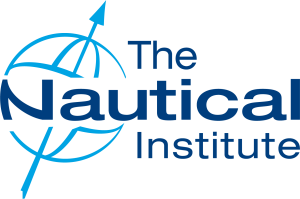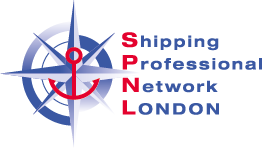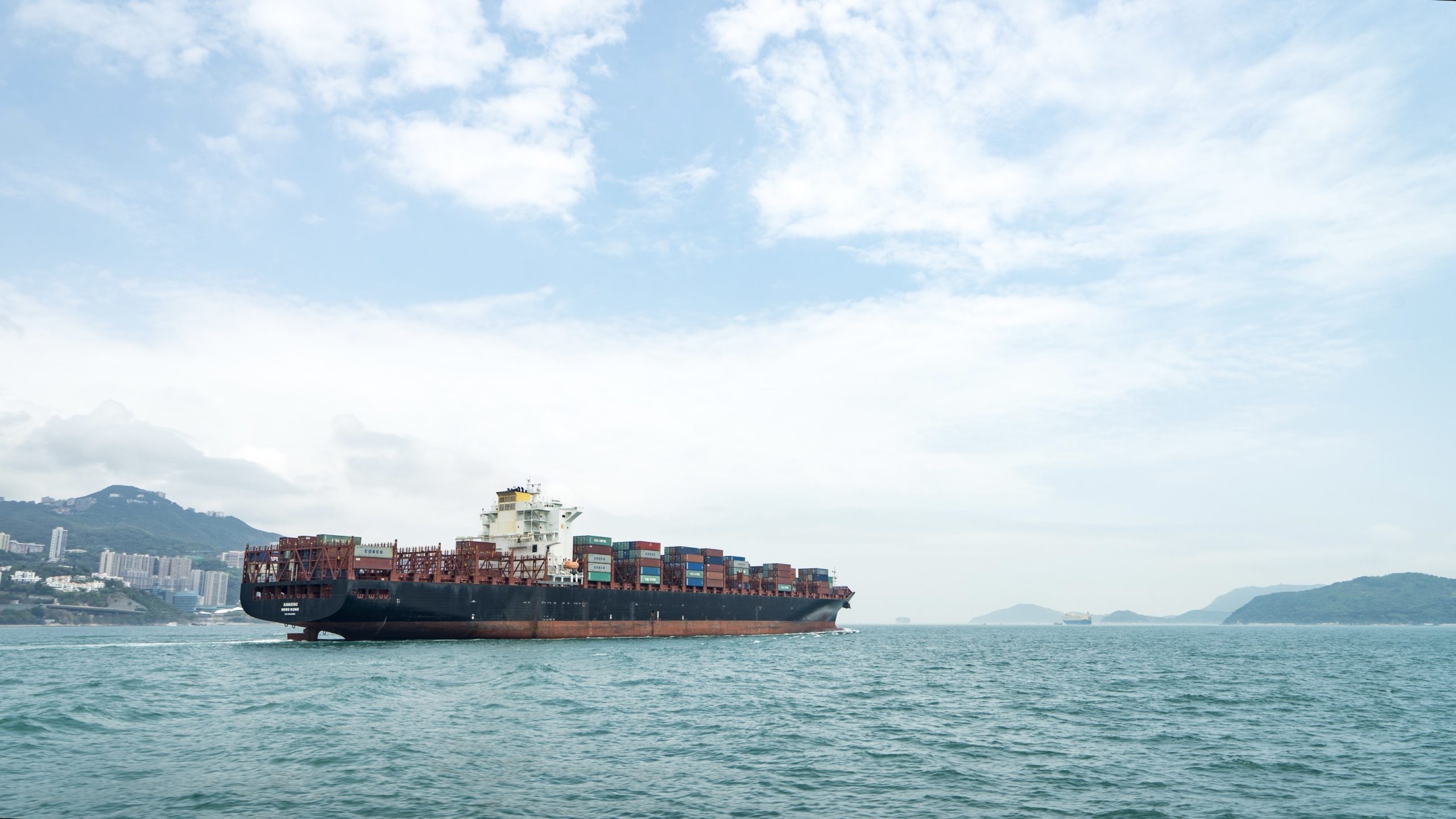Technical Conference: Managing CII and Associated Challenges
As part of its commitment to addressing climate change, the IMO has been working on the development of a Carbon Intensity Indicator (CII) for international shipping. The CII is intended to measure the carbon efficiency of ships and assess their relative carbon emissions performance.
The concept of the CII was introduced in the IMO’s Initial Strategy on Reduction of GHG Emissions from Ships, adopted in 2018. The strategy sets out a vision to reduce total annual greenhouse gas emissions from international shipping.
The CII is being developed as a key tool to assess and monitor the carbon intensity of ships, providing a standardized and transparent measure for evaluating their energy efficiency and emissions performance. It is expected to be a dynamic indicator that can be updated periodically to reflect technological advancements and best practices.
The CII requirements will take effect from 2023, so in 2024 the industry is expecting to receive the first feedback of CII measure.
The Royal Institution of Naval Architects is proposing the technical conference to gather key stakeholders of the maritime industry to discuss challenges and opportunities of this measure.
“This is a timely initiative and it is good to see that high-profile stakeholders have announced already that they will take part,” comments Volker Bertram, Senior Project Manager at DNV.
Edwin Pang, Founder of maritime consultancy Arcsilea Ltd and Chair of the RINA IMO Committee, adds: “The conference is a great opportunity to learn about both successes and challenges in implementing the CII, and ideally timed to feed into the review of the short term measure.”
Registration Fees
| Before 1 November 2023 | From 1 November 2023 | |
|---|---|---|
| RINA Member | £700 + VAT | £800 + VAT |
| RINA Non-Member | £800 + VAT | £900 + VAT |
| Concession (retired/students) | £350 + VAT | £350 + VAT |
| Authors | £150 + VAT | £150 + VAT |
| Additional Authors | £700 + VAT | £700 + VAT |
The registration has now been closed. If you still wish to attend but haven’t registered, please contact the RINA Events team at events@rina.org.uk as soon as possible.
For details on available hotel rates at the conference, please contact the RINA Events Team at events@rina.org.uk
Supported by:
View Preliminary ProgrammeSpeakers

Mr. Tianbing Huang, Deputy Director, Sub-Division of Protective Measures, Marine Environment Division, IMO
Tianbing Huang is currently the Deputy Director, Sub-Division of Protective Measures in the Marine Environment Division of IMO.
He directs and supervises the activities of the Sub-Division which is responsible for the implementation of IMO environmental related Conventions, including MARPOL, Ballast Water Management Convention, Hong Kong Convention and the environmental part of the Polar Code. He assists the Director in co-ordinating the work of the Division in preparing for, servicing and following up on meetings of the Marine Environment Protection Committee (MEPC) and its subsidiary bodies.
He started his career with China Maritime Safety Administration in 1992. He joined IMO in April 2005 as a technical officer at the Biosafety Section of Marine Environment Division. He graduated from Dalian Maritime University in 1992 with a degree in Maritime Administration, and from the World Maritime University in 1999 with an M.Sc. in Maritime Affairs.

Julien Boulland, Global market leader for sustainable shipping within Bureau Veritas Marine & Offshore, head-office commercial team.
Julien began his career at Bureau Veritas in 2006 as a naval architect. He has been working for the past ten years in Sıngapore serving the South-East Asia region, with the last role specializing in the LNG market as subject matter expert in gas technologies for shipping (LNG as as cargo and LNG as fuel). He was most recently relocated to Paris head-office in the Gas expertise team within Ship Newbuilding management as gas principal expert. He is now within the commercial department, covering Sustainable shipping (next generation of fuels : hydrogen, methanol, ammonia, and new technologies to help decarbonize shipping : carbon capture, wind-assistance, air lubrication system, design optimization).
Topics
We invite papers on all related topics but not limited to:
- Legal/political side
- Green finance
- Technical and operational measures “in practice”
- Monitoring issues, better predictions
Abstracts
View All Abstracts
A Case Study on Using Voyage Optimisation Techniques for Improving a Vessel’s CII Rating.
Oliwia Gałecka, Ardmore Shipping
This Paper examines the potential impact of employing robust voyage optimization techniques on enhancing a vessel’s Carbon Intensity Indicator (CII) rating. Emphasis is placed on the advantages of utilizing current findings from vessel performance evaluations to determine the ship’s behaviour within the weather routing program. The convergence of human expertise and automated computation represents a core component in the weather routing procedures used by Ardmore Shipping. Additionally, the paper explores the future prospects of voyage optimization by integrating dynamic propulsive power control systems through a real-world case study.
CII- Impact on d’Amico Fleet
Cesare d’Api, d’amico società di navigazione spa
CII and EEXI are two complementary Indicators for measuring ship efficiency. Understanding the practical implication of adopting CII cannot be done alone without analyzing the differences in formula between the two indicators.
Among the various factors that rapidly destroy CII values, the most important are certainly:
- many short voyages;
- port waiting times;
Generally speaking, the CII is highly dependent on the “Size” of the ships and thus their operational profile. Moving from the Handysize to the capesize, we see how the size effect has a benefit on staying in a “good” ranking for multiple years.
Certainly “slow steaming” gives a positive effect to remain in the same class ranking, hardly on making a jump in class.
“Technical retrofits” unless draconian measures are adopted, have a very limited effect on the CII.
The use “biofuels blends” from renewable sources as established at the recent MEPC 80 certainly gives a benefit to improving ranking.
However, there are contradictions to how the CII formula has been designed, such as the benefit that ships get by doing more miles in ballast than in laden, and this makes CII in some respects an index of inefficiency. The adoption of additional correction factors such as waiting time, dd days, short voyage can make the formula more robust.
In this context, “real time monitoring” of the CII is a strategic element to catch changes in the ranking in time and take corrective actions mainly operational before the ship ends up in a class of merit that requires modification of the SEEMP.
Managing CII through itinerary optimisation
Ivana Melillo, MSC Cruise Management (UK) Ltd
This paper presents a cruise itinerary optimisation tool concept implemented within EU funded project CHEK, with the objective to minimise environmental impact of the ship’s emissions taking into consideration economical sustainability and touristic attractiveness.
The approach used to face the Cruise Itinerary Problem for a ship pre-assigned to a specific basin is being further addressed. Given the list of the available ports, a duration and the starting/ending port, the problem consists in the selection of the ports to visit together with the arrival and the departure time of the ship at/from each port. The paper explores all the aspects and presents a potential use of the system for evaluating the possibility to reduce the CII index for environmental impact by optimising the timings of arrival/departure to/from the ports through different modalities of usage that the tool offers.
Decarbonizing Bulk Carriers 2030 & 2050 Vision
Volker Bertram, DNV
This paper discusses options in decarbonizing bulk carrier shipping from now to 2050. The discussion is structured into two phases, short-term to 2030, with tried-and-proven energy efficiency options, and long-term to 2050 using more ‘exotic’ energy efficiency options and alternative fuels. The short-term changes are mainly imposed by CII requirements, where ship owners respond with retrofits and operational measures. The long-term vision requires significant changes in the designs which should be considered already now for future projects. Design studies from joint industry projects give a glimpse of future bulk carrier designs and bulk shipping.
Wind propulsion for tankers? – An investigation into the CII reduction potential for ships operating on the spot market
Frederik Gerhardt, RISE/SSPA
Over the last years the number of ships with wind assisted propulsion has increased rapidly. As of today, there are around thirty ships with some kind of wind assistance, only two of these are tankers. Why?
In this paper we investigate to what extent the variable trading patterns of the tanker industry influence the business case for installing wind-assistance. Two case studies are presented: A 49 000 DWT parcel tanker with four rotor sails and a 300 000 DWT Very Large Crude Carrier (VLCC) equipped with eight wing sails. For both ships, route simulations for a typical year of trading have been conducted with the in-house code SEAMAN Winds. Results are presented and discussed in the light of CII reduction potential for a “business as usual” and a “future” scenario with lower operational speeds and more flexible arrival time windows.
Paradigm Shift in Energy Efficiency Measures – Silicone-based Low Friction Coatings
Yigit Demirel, Hempel
In the conventional maritime context, biofouling is perceived as an undesirable occurrence since it increases ship resistance and fuel consumption. Antifouling solutions have traditionally been employed to counteract biofouling, primarily serving as a means to improve the energy efficiency by mitigating biofouling accumulation and the resulting added resistance due to biofouling. This renders them a pivotal biofouling management tool for in-service assets. Nonetheless, contemporary advancements in marine coatings offer a dual functionality, showcasing their capacity to reduce ship frictional resistance upon application and to sustainably mitigate biofouling-induced added resistance during operational phases. This transformative capability situates silicone-based low friction coatings in a distinctive position, serving as both a biofouling mitigation tool and an Energy Efficiency Technology, a role that is often underestimated. In other words, silicone-based low friction coatings serve as both a technical and an operational measure. This paper elucidates this dual functionality in enhancing the energy efficiency of ships, and presents the CII reduction potential of silicone-based low friction coatings through a case study.
Quantifying the effect of biofouling on vessel performance – solving a crucial ‘missing link’
Tor Mikal Østervold, ECOsubsea
Biofouling growth on hulls adds drag causing elevated fuel burn and CO2 emissions, which can impact CII ratings. However, until now there has been no data quantifying biofouling rate per type of antifouling paint and vessel performance over time. This has made it challenging to assess exactly how often to clean a ship.
ECOsubsea is the only hull-cleaning company to consistently collect and measure biomass removed during cleaning. Our dataset is constantly expanding and increasing in accuracy. This capability provided the basis for a two-year study with a leading shipowner that compared the weight of biofouling removed during cleaning operations across a substantial fleet with the quantifiable effect on vessel performance.
The results clearly show the benefit of cleaning early to reduce fuel ‘leakage’ due to biofouling, while also saving money on each clean. It doesn’t make sense to delay cleaning as overconsumption increases.
The data also supports coating selection. For example, depending on operational profile there may be a case to choose a coating that fouls fast but the cost of more frequent cleaning will still be less.
By providing actionable data demonstrating the relationship between cleaning, coatings and performance we can help operators fix the leakage challenge and save money. The saving easily outweighs the overall cost of cleaning.
And there are big numbers at stake; we estimate proactive cleaning can save 10 million tons of fuel worth USD 20 billion every year. It is a key corrective strategy on our shared journey to a greener future that can be implemented today.
The impact of hull & propeller performance to CII ratings
Eirini Arvanitaki, Vessel Performance Solutions
The Carbon Intensity Indicator (CII) is a rating system for ships that IMO developed, to benchmark the operational performance of the global fleet and incentivize more sustainable shipping. Although it is well established in the industry that operational parameters, such as speed, idling, percentage of ballast trips etc, is impacting the CII rates significantly, it has not been as clear and easy to quantify the impact of a fouled vs a clean hull to the CII rates. In this paper, the impact of hull cleanings and drydockings to the CII ratings has been calculated for a fleet of vessels. To achieve this, physical models calibrated to operational data have been used and projections have been made based on statistics of historic data. This paper demonstrates how a strategy of a good hull treatment at drydocking, performance monitoring based on validated datasets and condition-based maintenance of hull and propeller can greatly impact the future CII rates of a fleet.
Correction Factors for CII Calculations – Saving Potentials with High Quality Sensor Data
Uwe Altenbach, Hoppe Marine GmbH
The MEPC Res. 355 (78) provides the application of correction factors in the determination of the Carbon Intensity Indicator (CII), with the intention to substitute energy-intensive cargo such as frozen food products and liquified gases from CII calculation. This paper elaborates on the prerequisites in terms of the energy data acquisition technology required, which at the same time provides the technical basis for a holistic optimisation of the operation.
Impact of propulsion improving devices on CII: current challenges
Alessandro Castagna, Becker Marine Systems
Amongst different measures to improve the CII, the application of new technologies is also an added value for the ship. Even if significant savings are not achievable with today’s technology, an improvement between 5-10% can extend the compliance of the ship for several years until a point where alternative fuels or alternative propulsion concepts will become available and at reasonable cost.
Energy saving devices like ducts, pre-swirl fins, cap fins or modified propellers, are proven technologies with low installation costs and short ROI. Their installation results in shifting the speed-power curve: at a same speed the power is reduced and consequently a fuel saving is generated improving the CII.
Although the improvement of the ESDs is verified by model tests or numerical calculations, many ship owners are skeptical due to different effects occuring during normal ship operation: data accuracy, weather, hull and loading condition. How to deal with this issues? A detailed analysis.
Wind-assisted ship propulsion as a Versatile tool for boosting CII score
Konstantinos Fakiolas, FINOCEAN LTD
Winds at the ocean seas can be exploited in a variety of ways to support the CII score for any given ship.
This paper will demonstrate what is the global average potential wind propulsion contribution for CII improvement and will analyse the positive impact of various WASP technologies in certain benchmark cargo ship types and sizes sailing in the most dense trading routes associated with their usual patterns regarding both laden and ballast voyages.
Suitable WASP arrangements per different ship types will be shown along with the benefits that can be brought to the individual CII scores, so that ship owners can realize the positive impact in carbon intensity.
Methods will be developed on how ship owners can convert the fluctuating wind variability and ship operational parameters into a toolbox for CII score control and trade optimization.
Suggestions will be made for future amendments to CII formula in order to account for the operational performance of Wind assisted propulsion.
Leveraging Rotor Sails to support CII compliance
Ville Paakkari, Norsepower
Complying with energy efficiency regulations can be achieved in three different ways. First one is to reduce sailing speed, second one is to apply proven solutions for improving fuel economy of the vessel and the third is to use fuel with a lower emission factor. Ship speed reduction is not often considered desirable, so shipowners and operators must optimize the use of various proven technologies and alternative fuels. In this paper, the impact of CII in the business case of wind propulsion is assessed. To do this, the investment profitability was determined with a simple mathematical formula derived from the CII calculation formula. Keeping in mind that the CII regulation requires reducing the index every year it was noted that this creates additional pressure to use high price fuel and therefore improves the business case of investing in fuel saving technologies. The presentation includes examples of cases demonstrating the influence of a rotor sail installation on a ship’s CII. The significance of fuel cost is highlighted in various operating routes and profiles. It is argued that the business case of wind propulsion is significantly improved by the possible CII limitation of the ship and that the tightening regulation should be factored in when conducting the business case assessment.
A Maritime Sandbox: Implications of the Carbon Intensity Indicator (CII) Regulation on Ice-Classed Ships.
Thomas Browne, National Research Council of Canada
This paper introduces the concept of a Maritime Regulatory Sandbox to investigate how regulations may impact ship operations and how ship operators may adapt to new regulations. The Maritime Regulatory Sandbox is a computer-based simulation tool that incorporates ship performance models, environmental models, regulatory constraint models, and route optimization algorithms. Through simulation, optimized routes and speeds and estimates of operational performance are identified. To date, the Maritime Regulatory Sandbox has been used to investigate the Carbon Intensity Indicator (CII) regulation and its impact on ships operating in ice. The intent of this paper is to introduce the general methodology, present case studies for the CII regulation, and discuss next steps in development and application of the Maritime Regulatory Sandbox. Specific to CII, the Maritime Regulatory Sandbox can support the anticipated International Maritime Organization review of CII efficiency and implementation.
The review of the Carbon Intensity Indicator and possible system improvements.
Chris Waddington, International Chamber of Shipping
The CII rating system came into effect on 1st January 2023, and is initially within a 3 year period of soft enforcement. A review of the system must be completed by 1st January 2026, and it is likely that harder enforcement will follow. Industry is concerned that the existing system has a number of anomalies that if left uncorrected could unfairly affect the viability of certain ship types, and regions and modes of operation.
This paper will highlight CII system weaknesses relating to the metrics, the correction factors and the reference lines. The CII review process will be detailed in terms of its scope and schedule. ICS’s preparations to engage constructively with the review process will be outlined , e.g. with respect to gathering data and preparation of submissions to IMO’s Marine Environment Protection Committee (MEPC). Several suggestions for system improvement have already been made by stakeholders, and this paper will provide a round-up of some of these proposals.
Improvement to CII metric based on Equivalent Transport Work Principle for better Monitoring and Prediction
Sandip Patil, Indian Register of Shipping (IRCLASS)
Prior history and Introduction to Abstract:
CII metric is an important formula to achieve Net Zero goal of IMO on Individual Ship basis. But due to drawbacks in basic G1-CII formula , interim CII formula is adopted via G5 guidelines. This formula is based on correction factors (CF) and voyage exclusions (VE) i.e., principle of deduction for factors where Ship has no control.
Still interim G5-CII lacks correction for multiple factors such as Port stays, weather losses, Short Voyages, Bulk carrier Self-loading-unloading, Boil of gas and many more which needs due consideration. Issue of actual cargo carrying capacity in relation to Partial Laden and Ballast voyages is still pending which has highest variation in CII values.
As a Solution author suggests an improved CII formula in which for all the fuels consumed due to factors beyond Ship’s control; an Equivalent Transport work is added. Attached file gives detailed Abstract along with New Proposed CII metric.
See the Full Abstract here: Sandip Patil – IRCLASS Abstract.
Proposal for a Revised CII Calculation Method for Cruise Passenger Ships
Justin Epstein, Royal Caribbean Group
The CII was introduced by the IMO as a measure to drive CO2 reduction for all ships and building on the Data Collection System (DCS) for reporting. As companies have examined the CII and as well as IMO have launched an ambitious plan for substantial CO2 reduction towards 2030 and beyond, it has become clear that the current CII metric does not work very well for some ship types. In fact, in order to improve CII rating for compliance, it will in some cases be beneficial for these ships to travel longer distances and emit more CO2. A working group of the Cruise Safety and Sustainability Forum (CSSF) has evaluated a range of alternatives to the current CII formulation and have concluded that replacing “distance” with “days” in the CII formula will better align with the ambition to reduce absolute CO2 emissions, thus reducing the perverse incentive mentioned above. The revised CII calculation method will particularly allow cruise passenger ships to more efficiently contribute to the Levels of Ambition of the IMO Strategy on Reduction of GHG Emissions from Ships.
Registration
Cancellations received in writing up to two weeks before the event takes place will be subject to administration charge of £200. Cancellations received after this time cannot be accepted and are subject to the full event fee. Delegates may be substituted; however, this must be sent in writing and confirmed with the RINA Events Team. It may be necessary for reasons beyond our control to alter the content and timing of the programme. In the unlikely event that RINA cancels the event for any reason, our liability is limited to the return of the registration fee.
Personal Data
Please note that personal data, such as name and company, will be collected and provided in the delegate list format to the event attendees. No contact details will be included in the delegate list. If you would like to not be included in the list for any reason, please inform the RINA Events Team at events@rina.org.uk
Filming/Photography
Please note that filming/photography will be taking place at this event for promotional and archival purposes. The photographs and recordings made are likely to appear on our website and social media. If you would prefer not to be photographed please let the Marketing team know at marketing@rina.org.uk.
Sponsorship Opportunities
RINA events provide the perfect opportunity for effective and highly targeted marketing. Sponsorship and exhibition opportunities exist for all of our conferences. For more information please click here.
If you have any questions regarding the conference, please get in touch with the RINA Events team at events@rina.org.uk
Continual Professional Development
Attendance at the RINA conferences and courses qualifies as Continuing Professional Development. On completion of the course a CPD certificate will be issued.


